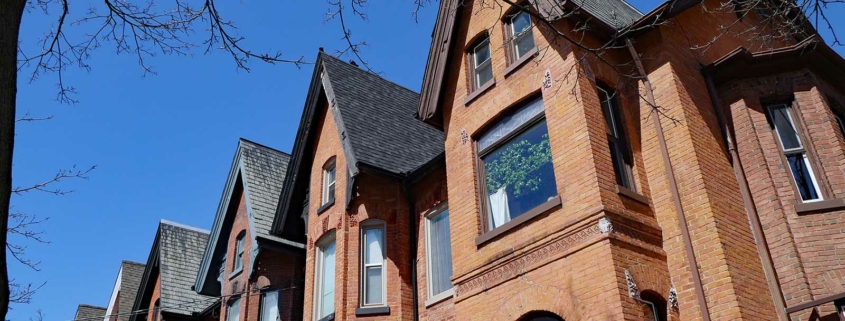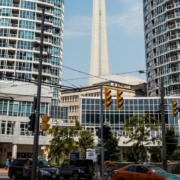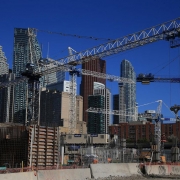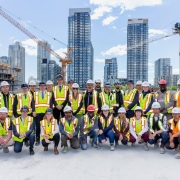From the launch of the first iPhone, to the world’s population reaching seven billion people, a lot has changed in the past 25 years. In that same quarter-century timespan, the Greater Toronto Area’s housing market has also witnessed remarkable transformation.
In its Quarter Century Market Report released today, RE/MAX Canada says that home sales have doubled while prices have soared over 450 per cent in the GTA since 1996, growth that has been supported by market demand and limited home supply. The report examined home buying activity in the nine Toronto Regional Real Estate Board (TRREB) districts which make up the GTA.
Between 1996 and 2021, over two million GTA homes have been sold, equal to a dollar volume of $1.1 trillion. The number of residential sales has grown 118.2 per cent between 1996 (55,779 transactions) and 2021 (121,712 transactions).
Meanwhile, the average home price has risen 453 per cent over the same 25-year period, with prices climbing from $198,150 in 1996 to $1,095,475 in 2021, a compound annual growth rate of 7.08 per cent.
“Performance of the GTA housing market over the 25-year period has been nothing short of remarkable,” said Christopher Alexander, president of RE/MAX Canada, in the report. “This is especially so when considering this time period was characterized by the tech meltdown of 2000, 9/11, SARS, the Great Recession of 2008, Ontario’s Fair Housing Plan and the on-going pandemic.”
New construction, transportation contributes to Toronto’s real estate growth
Upon examining TRREB’s market districts, RE/MAX’s Quarter Century report found that land availability, particularly within the city’s core, has “waned.” Meanwhile, migration, low interest rates and housing affordability have continued to play a critical role in the growth of the Toronto region.
In the last 25 years, Toronto Central, Halton Region, York Region, Simcoe County and Dufferin County have reported triple-digit sales increases, rising 156.9 per cent to as high as 1,123.7 per cent. Average GTA sale prices have also reached new highs in the last quarter-century, from a low of 301 per cent to a high of 874 per cent.
New construction has been a “significant factor,” in the sales gains seen throughout GTA regions such as Peel, Durham, Halton and York. The GTA’s 905 communities evolved to be affordable alternatives for freehold property purchasers, with starter homes on smaller lots enticing first-time buyers outside of the 416 area, RE/MAX Canada explained. Transportation initiatives like the expansion of the GO train system and 400-series highways have also supported growth, bringing new life to older cities like Milton, East Gwillimbury and Innisfil.
“If you build it, they will come, and they sure did,” said Alexander. “Bolstered by historically low interest rates, a strong economy, grit and determination, buyers both young and old have moved to the city’s bedroom communities.”
GTA housing and development to evolve with land availability
With land in limited supply within the GTA’s 905 areas, the emphasis is moving from freehold homes to high-density properties, RE/MAX Canada noted.
For instance, condos represent one in two sales within Mississauga, while more condo developments are in the works for areas like Brampton, York Region and Pickering’s City Centre.
“The GTA’s housing stock continues to evolve based on land availability. Builders and developers are faced with the harsh reality of a land supply-crunch as affordability remains top of mind with the vast majority of buyers,” said Alexander in the report.
Vertical growth has played a “significant role” in climbing sales levels within the 416 region, as condo apartments and townhomes now account for 76 per cent of sales in Central Toronto. Builders and developers look to existing buildings for potential demolition as many of the existing parking lots and vacant land have been bought up. In other cases, RE/MAX explains that developers have gutted and redeveloped existing structures for housing, such as The Britt in Toronto, formerly the Sutton Place Hotel.
“While the preference may be freehold, the necessity to build vertical communities has never been more apparent in a city where the population has grown by two million people since 1996 and is expected to ramp up in coming years,” said Alexander.








 Maziar Moini, Broker of Record - Home Leader Realty Inc.
300 Richmond St. W., #300, Toronto, ON M5V-1X2
Maziar Moini, Broker of Record - Home Leader Realty Inc.
300 Richmond St. W., #300, Toronto, ON M5V-1X2

